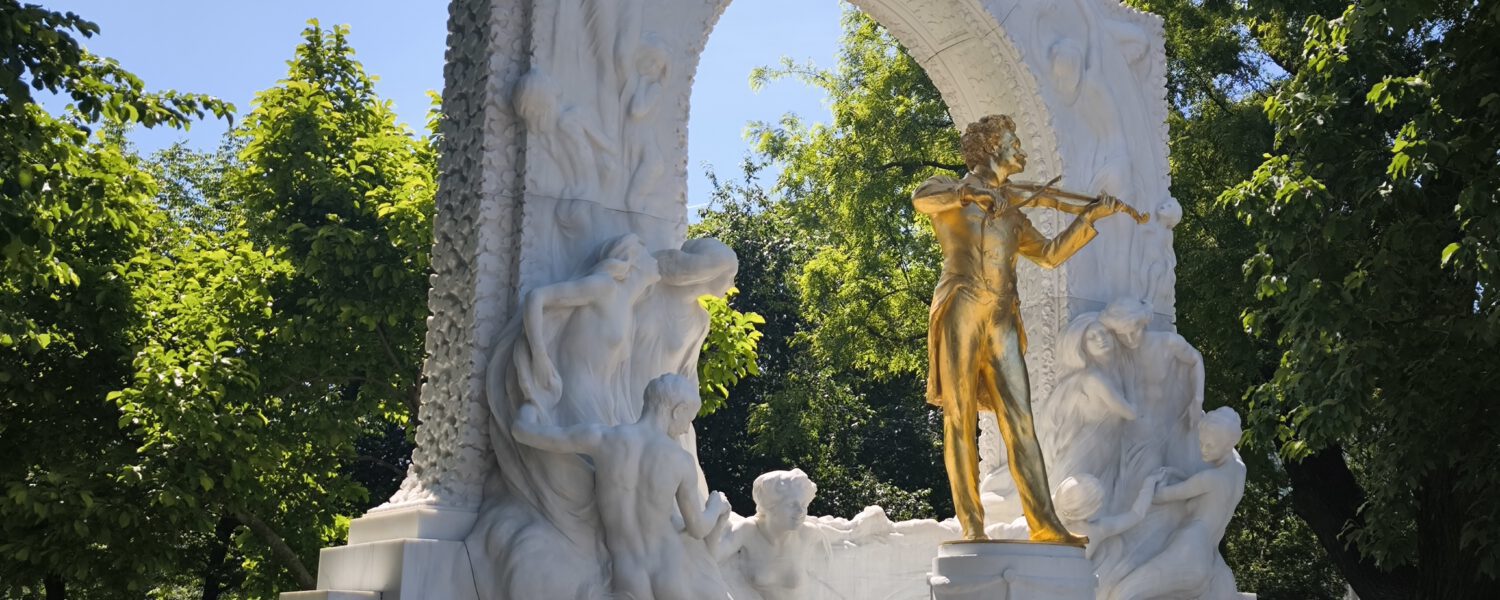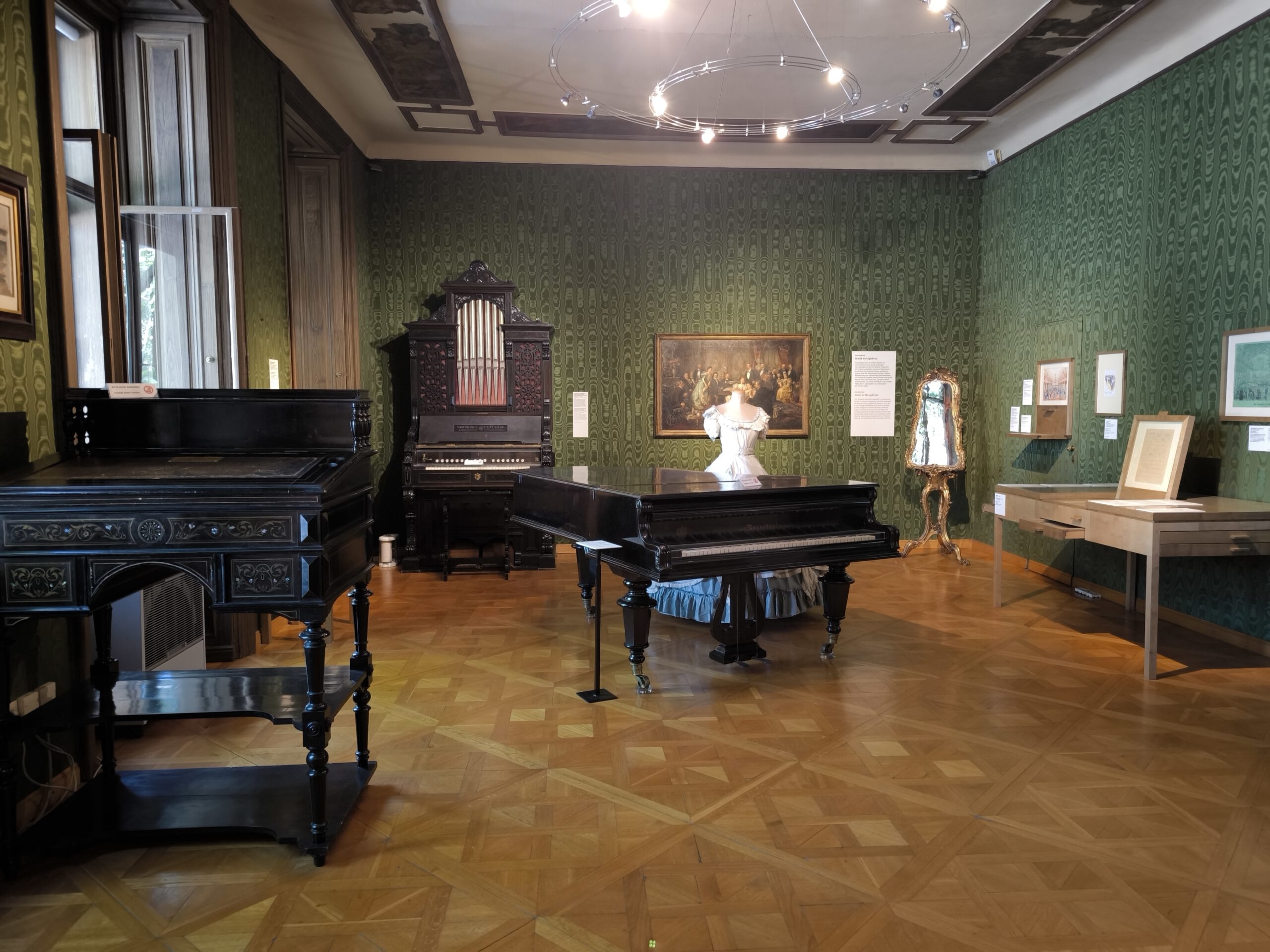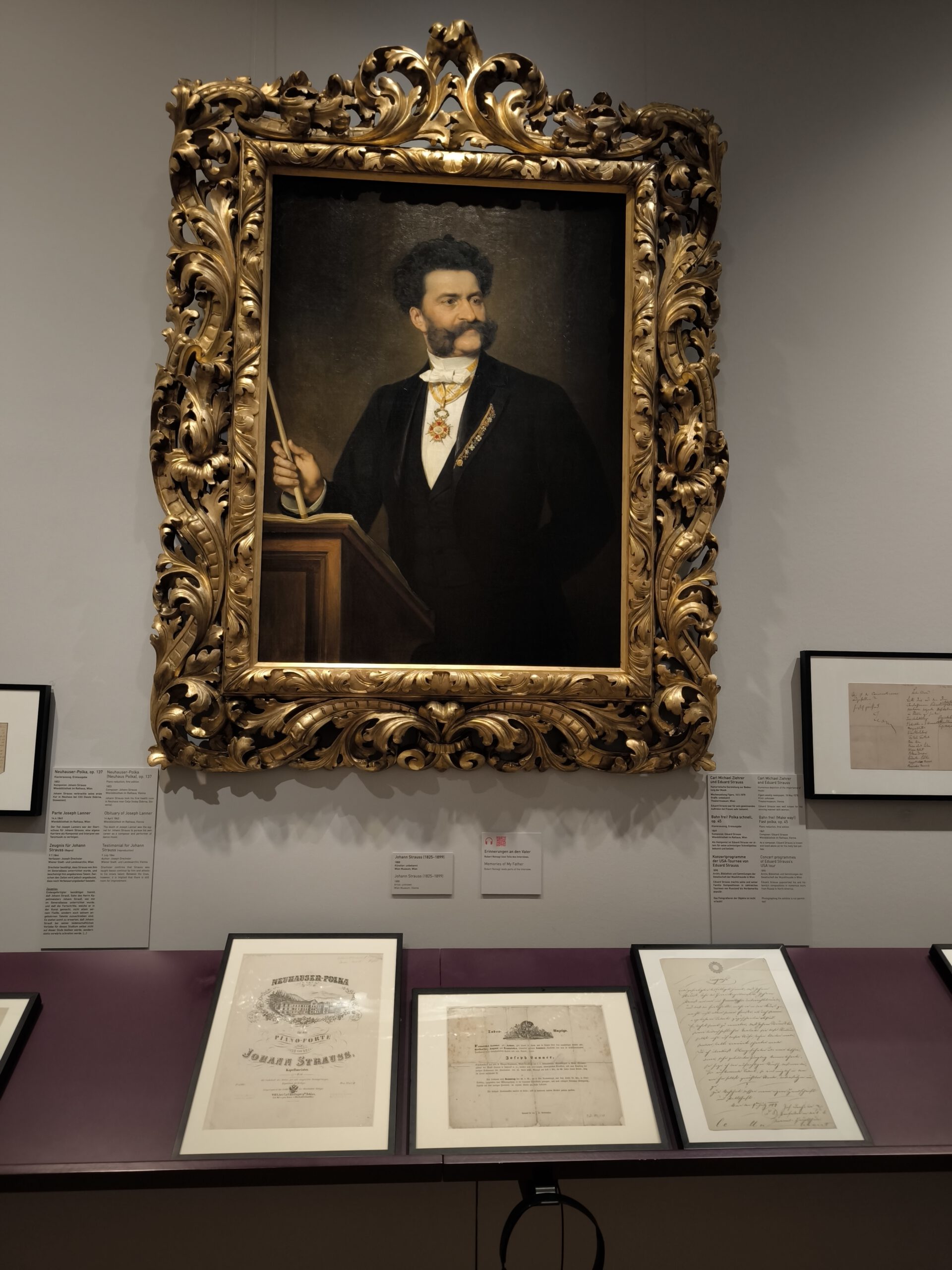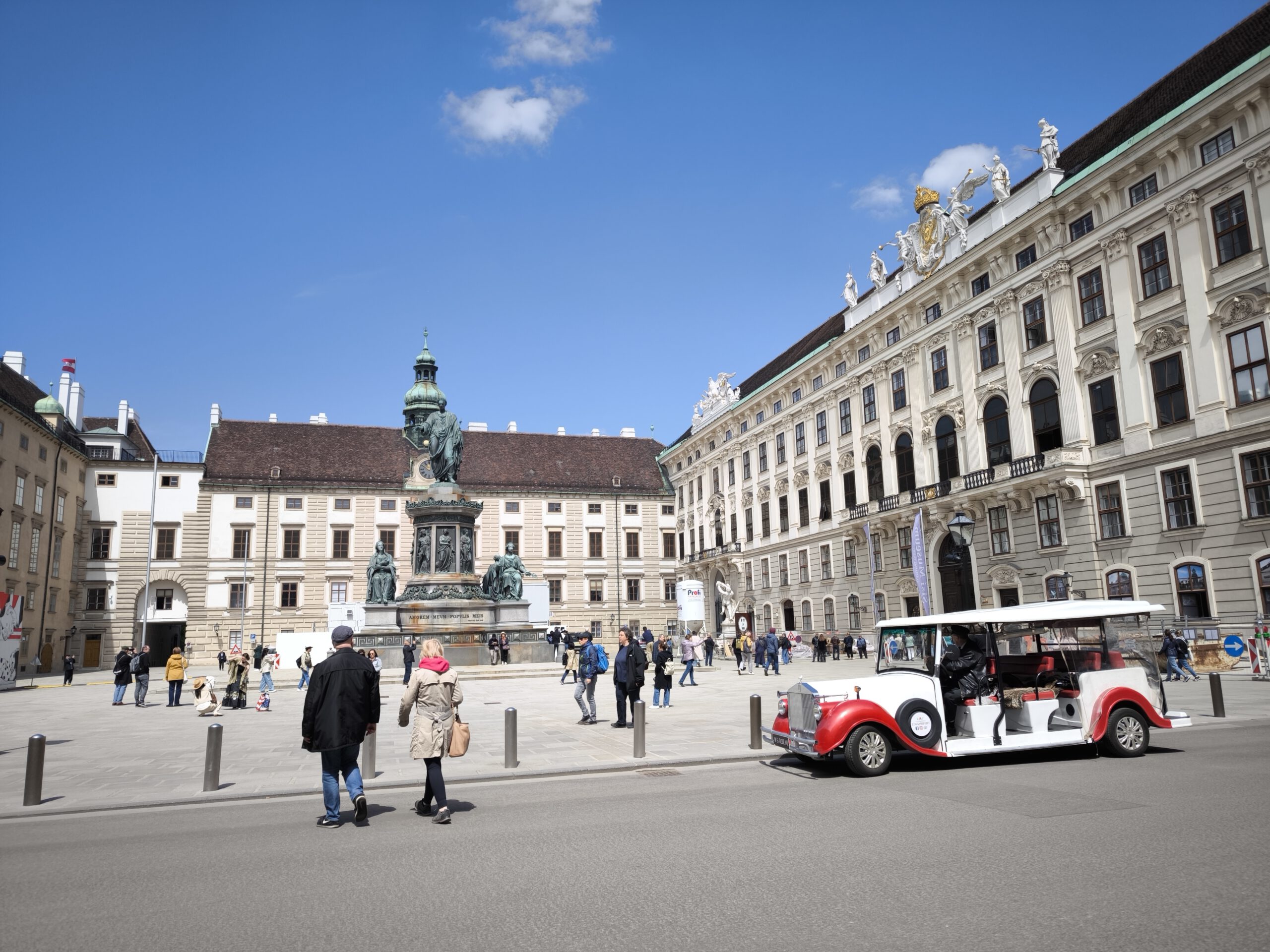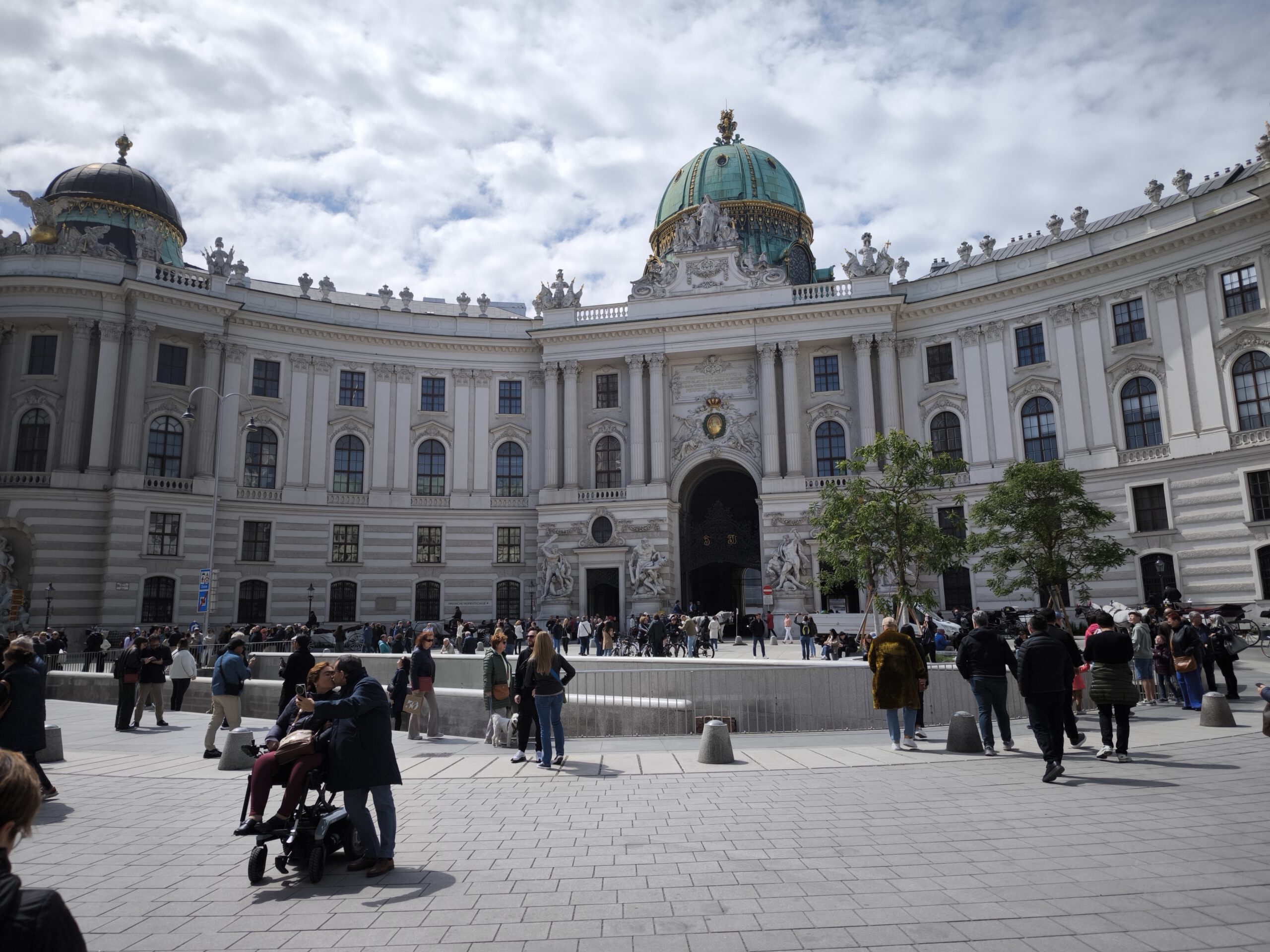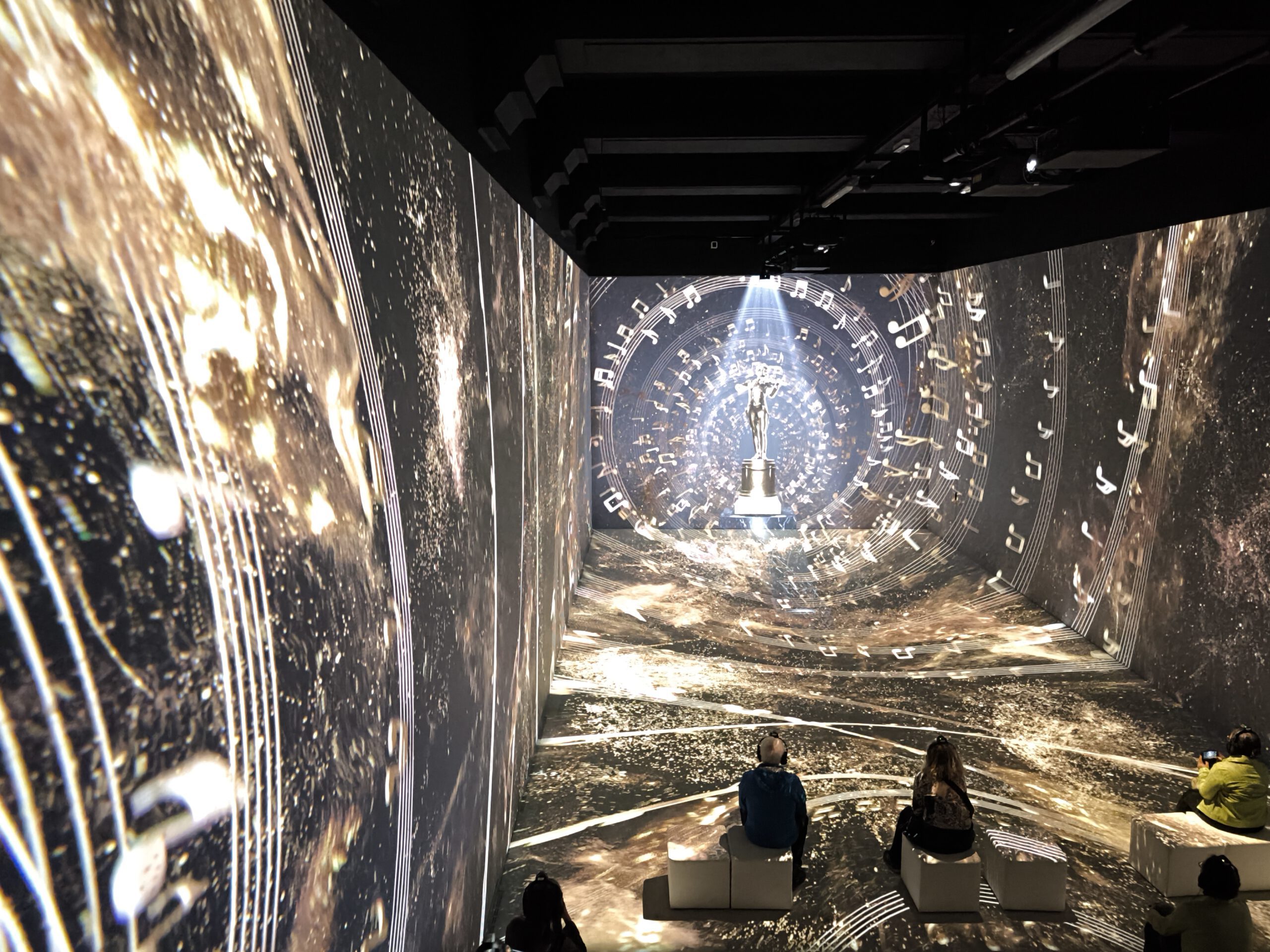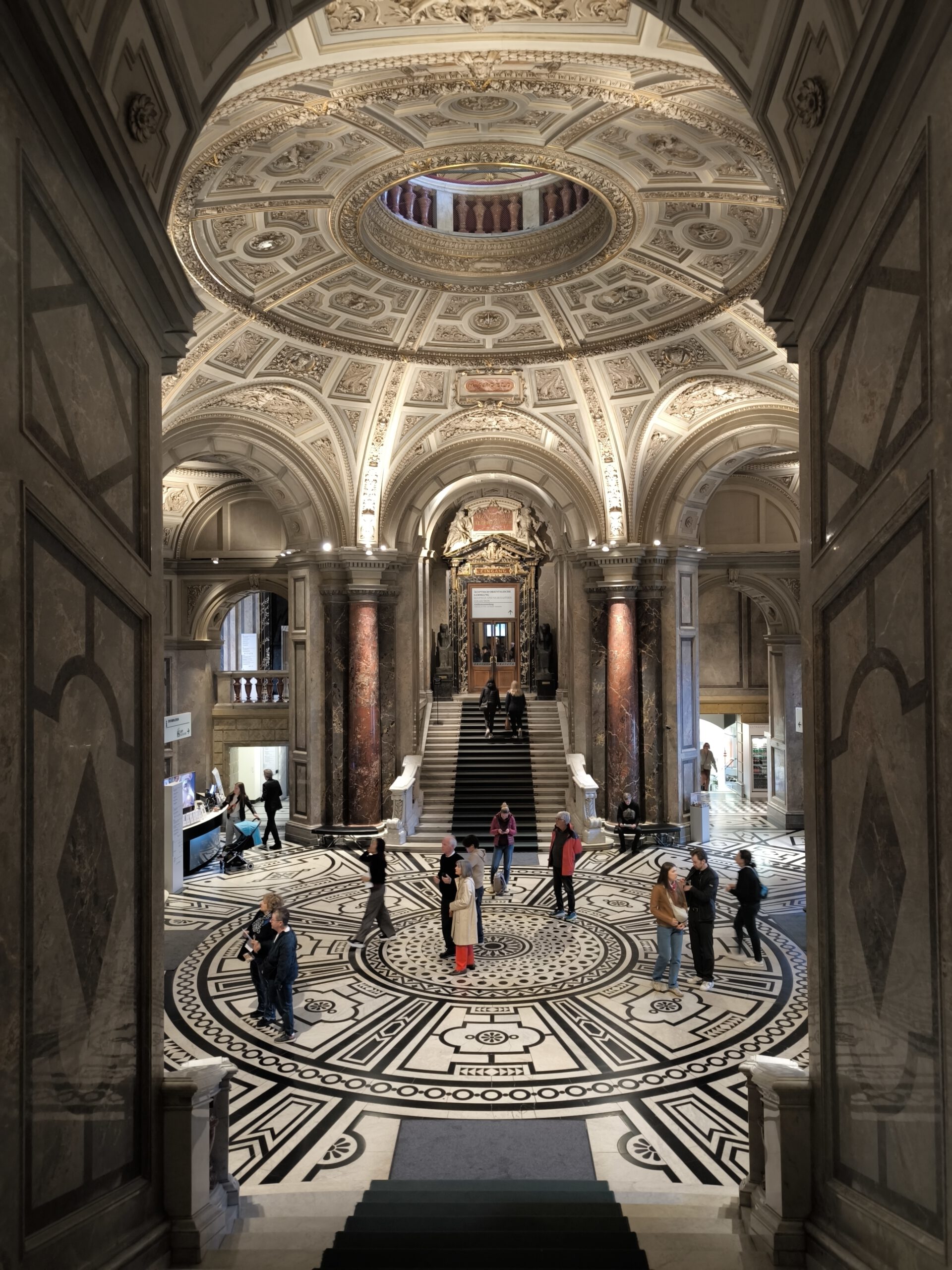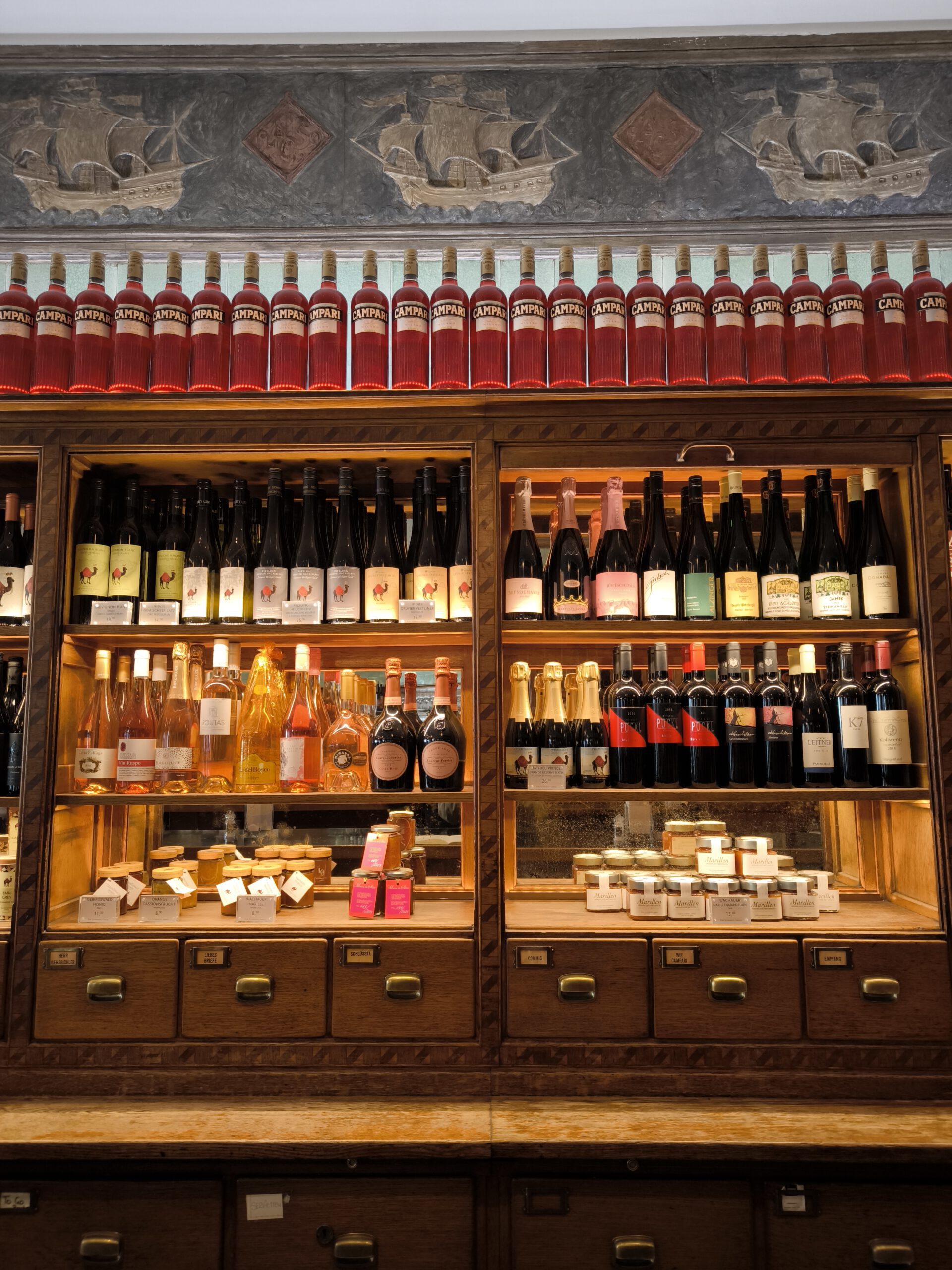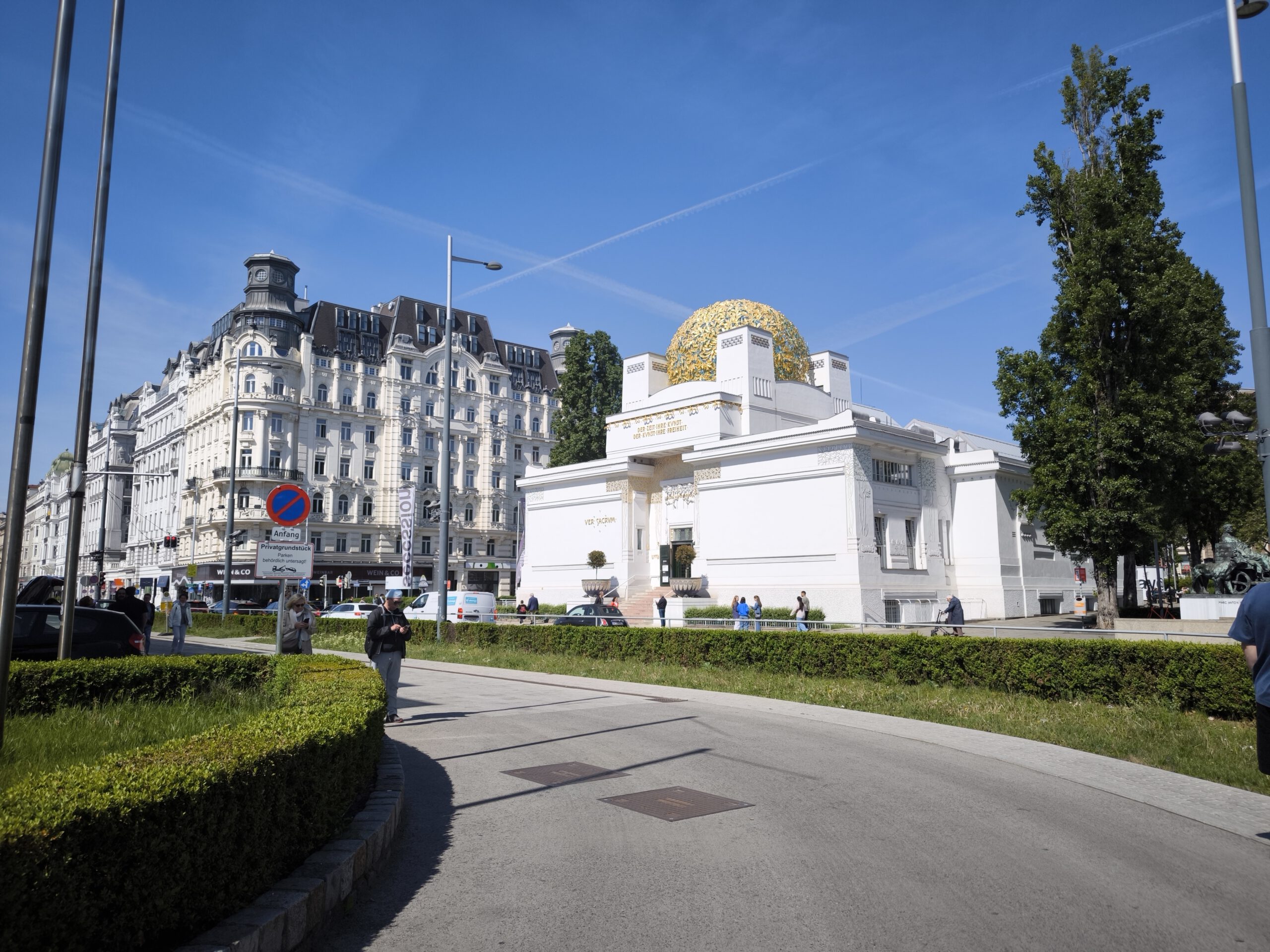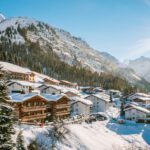
Lech – On a ski safari between beach chairs and Casanova cuts
21. April 2025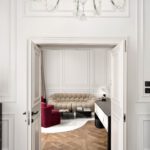
Vienna – The Amauris a dream hotel on the Ring
9. June 2025On the trail of the King of Waltz
London has the Rolling Stones, Salzburg has Mozart and Vienna has Johann Strauss: the exceptional artist was born 200 years ago and Vienna is celebrating him in his anniversary year with new museums, exhibitions and concerts. A weekend of waltzing bliss with a superstar of the 19th century.
The ‘Danube Waltz’, ‘Die Fledermaus’ or ‘Wiener Blut’ - the dance and concert music as well as the stage works of Johann Strauss continue to fascinate to this day. But who was the man who is celebrated for his compositions of the century, who rose to become a wealthy world star and left his mark on Vienna like no other?
When an actor slips into the role of the composer - such as in the Netflix series ‘The Empress’ with Andreas Bongard as Strauss - the viewer usually sees a completely spiritualised type at the piano with full, tousled hair and a mighty moustache and beard. The exaggerated film portrayal flirts with the many caricatures of the composer that appeared in countless publications during his lifetime. Johann Strauss (1825-1899) presumably took the denigration of his person calmly. After all, he himself enjoyed drawing caricatures of his contemporaries, one of his hobbies alongside playing tarot and billiards. This private insight can be seen in his elegant retreat, his flat in Praterstrasse.
The first Strauss Museum is located in Leopoldstadt in the second district. A charming neighbourhood with town houses, cafés, restaurants and Strauss' flat. He lived here from 1863 to the 1870s with his first wife Jetty, an opera singer, and composed Austria's unofficial anthem and his most famous waltz ‘On the Beautiful Blue Danube’. The cheerfully elegant melody still makes people happy almost 160 years later and is the epitome of Viennese music. There is hardly a New Year's concert by the Vienna Philharmonic Orchestra that is broadcast all over the world without the famous waltz in the Great Hall of the Musikverein. The Viennese would never start the New Year without the musical gems of the Strauss dynasty, which was founded by his father, Johann Strauss (1804-1849). His cheerful and lively Radetzky March traditionally closes the New Year's Concert and was first performed in 1848 at a time of political upheaval. ‘From the middle of the century, the music scene was privatised and every coffee house owner was allowed to run a ballroom,’ explains city guide Gilles Gubelmann. The whole of Vienna danced the waltz at balls - regardless of whether they were from the aristocracy or not.
- The flat at Praterstraße 54, where Johann ‘Schani’ Strauss resided with his first wife Henriette from 1863 to 1870. It was here that the waltz king wrote his world-famous ‘Danube Waltz’, which is considered Austria’s unofficial anthem alongside the Radetzky March
- Would you like a tour in a horse-drawn carriage?
- Letters, concert programmes or Johann Strauss in oil on canvas: the Theatre Museum near the Albertina has a Strauss exhibition well worth seeing
Grand balls are a tradition that is still part of life in Austria's capital today. If you want to shake a leg on the dance floor in three-four time, Vienna is the place to be. The ball season begins in January and lasts until early summer. The most famous is the Opera Ball in the State Opera House, but the Lawyers‘ Ball and the Hunters’ Ball in the Hofburg also delight dance lovers. A waltz with the typical symphonic power of the Sträusse is guaranteed to be on the programme. ‘The Sträusse did not invent the waltz, but they developed it into a great orchestral work. Their father paved the way for this. The relationship with his sons and Johann in particular was difficult and characterised by competition,’ explains Gilles Gubelmann. It was only after the death of his father in 1849 - he died of scarlet fever and exhaustion - that Johann, with the energetic support of his mother Anna, took off to become a superstar of the 19th century.
So back to the Beletage of the Strauss Museum in Leopoldstadt: this is where ‘Schani’ or ‘Jean’ - as the Viennese call Johann Strauss - would put his feet up after his performances. He rarely went out in private, he was usually too exhausted from his enormous workload of concerts. He often conducted several in one evening, facing the audience. At work, Strauss was a workaholic: ‘He wrote around 500 compositions, was enterprising and took high fees. First his mother took over the organisation of his performances, and later his three wives one after the other,’ says Gilles Gubelmann.
- Gilles Gubelmann gives a knowledgeable tour of Vienna and also follows in the footsteps of Johann Strauss
- A star in the musical firmament: Johann Strauss can be found on almost every corner in Vienna
Then on to the magnificent heart of Vienna on the Ring with the Hofburg, Opera House, the twin buildings of the Museum of Art History and Natural History or the Secession. The golden leaf dome of the Secession shines from afar. The outstanding Art Nouveau exhibition architecture was opened shortly before Johann Strauss' death. While the musical spirit of Wagner and Beethoven plays a role here, there is a new, opulent Strauss exhibition right opposite in the Museum New Dimensions. On 800 square metres, the Art & Tech exhibition stages his life as an interactive, multimedia experience. A GPS-tracked audio guide immerses visitors in the difficult family circumstances: Papa Strauss was not only an egocentric who did not grant his sons musical success, but was also unfaithful and fathered 14 children with two women.
Love also plays a major role for the son: the Russian musician Olga Smirnitskaya, whom he met on a concert tour in Pavlovsk, captures his heart and becomes his first great love. But it ends unhappily, as can be read in the letters on display. One room further on, the political and industrial upheavals of the 19th century are outlined. These include major inventions such as the railway - a terrible achievement for Strauss. From then on, he no longer had to go on tour by coach like his father, but by train, for example on the route from St. Petersburg to Pavlovsk in 1858/59. ‘He was terrified of travelling. He drew the curtains when the railway crossed a bridge. But he travelled anyway, even by ship across the Atlantic to Boston,’ says Gilles Gubelmann. The US concert in the summer of 1872, with around 60,000 spectators, surpassed all his previous concerts. Strauss conducted a huge orchestra of 1,000 musicians in Boston, including 400 violinists alone - it was a mega-gig comparable to a pop star concert today. At New Dimensions, visitors experience the Boston spectacle as part of an audiovisual final chord - a visual and auditory treat.
- Tourists travel by electric limousine or carriage to the Hofburg, the former winter residence of the Habsburg monarchy
- The entrance to the Hofburg: the Vienna Hofburg Orchestra gives concerts here in the Ceremonial and Festival Hall until the autumn, performing works by Strauss and Mozart
- A great multimedia Strauss experience: the new Museum New Dimensions opposite the Secession
- One of the most famous art museums in the world: the Kunsthistorisches Museum on the Ring opposite the Hofburg Palace
- Bar, brasserie and restaurant with Schani garden: the Zum schwarzem Kameel has been around since the 17th century
- On 15 January 1870, Johann Strauss Sohn performs at the inaugural ball in the Golden Hall of the Vienna Musikverein. Every year, the famous New Year’s Concert is broadcast from here. The motto for the encores is: ‘The same procedure as every year’. The Danube Waltz is played first, followed by the Radetzky March, which has the audience clapping along happily
Back outside the museum door, it's not far to the next Strauss exhibition: The city's famous son is also the focus of the Theatre Museum in Palais Lobkowitz near the Albertina. The vivid, scientifically curated exhibition in collaboration with the Vienna Library takes a closer look at the family history of the ‘Sträusse’ with mum Anna and brothers Eduard and Josef. Together, they brought ‘the Strauss company’ to fame, which continues to this day and which has earned the Viennese waltz Unesco cultural heritage status. Old stage costumes are effectively staged in red boxes, such as that of the humorous ‘Frosch’ from the operetta ‘Die Fledermaus’. Audio samples of arias at audio stations round off the exhibition and, of course, visitors can immerse themselves in the world-famous aria of the singing teacher Alfred (also from ‘Die Fledermaus’). The lyrics of the musical comedy have long since become a catchphrase and, although not a waltz, are perfect for bliss: ‘Happy is he who forgets what cannot be changed!’ - off to Vienna for the Strauss anniversary.
The trip was supported by Vienna Tourist Board and The Amauris Vienna hotel.
Further information:
www.wien.info
Anniversary programme:
The City of Vienna is offering a diverse cultural programme until 31 December 2025, presenting 65 productions and 3 exhibitions at 69 different locations in Vienna. The spectrum is divided into three programme pillars: PUR (Johann Strauss classical), MIX (Strauss works in a modern context), OFF (Strauss works in experimental formats)
www.johannstrauss2025.at
Museums:
Vienna Museum Johann Strauss Apartment
www.wienmuseum.at/johann_strauss_wohnung
New Dimensions
www.johannstrauss2025.at/en/event/johann-strauss-new-diemensions
House of Music: Special exhibition ‘Johann Strauss and the Vienna Philharmonic Orchestra’, until 31 March 2026
www.hdm.at
Theatre Museum: Johann Strauss the exhibition in cooperation with the Vienna Library in City Hall. Until 17 August 2025
www.theatermuseum.at
Museum of Art History
World-famous art collection with exhibits from 5000 years
Special exhibition: Arcimboldo's greatest masterpieces plus world-famous paintings by Bruegel and Bassano. Until 29 June
www.khm.at
House of Strauss: interactive museum with concert hall and restaurant in the 19th district (Casino Zögernitz)
www.houseofstrauss.at
Private city tours, e.g. with Gilles Gubelmann
www.gilles-guide-vienna.com
Lightning dance and ballroom courses
www.elmayer.at
Dining:
Brasserie Zum schwarzen Kameel
www.schwarzeskameel.at
Glacis Beisel: modern Viennese cuisine
www.glacisbeisl.at
Journey:
By plane e.g. with Austrian Airline from Frankfurt to Vienna and back incl. hand luggage and 23 kg checked baggage approx. 250 euros
By train from Frankfurt to Vienna and back without changing trains 2nd class at the Europe flex fare approx. 355 euros
Accommodation:
The Amauris Vienna
The hotel is ideally located on the Kärnter Ring diagonally opposite the Vienna State Opera and was built in 1862 as an aristocratic palace. It was completely renovated in 2018 and opened in early 2023. It has 17 suites and 45 rooms furnished in an elegant, classic style with marble bathrooms and marble doors. There is a bistro and the Glasswing, a highly recommended restaurant. The hotel has a spa area with indoor pool, whirlpool, sauna and steam bath. It belongs to the Relais & Châteaux luxury hotel association. Price example:
Deluxe room: from 390 EUR per night incl. breakfast
Executive Suite: from 720 EUR per night incl. breakfast
Grand Maisonette Suite: from 970 EUR per night incl. breakfast
Steigenberger Hotel Herrenhof
The hotel is located in the first district, not far from Kohlmarkt and Graben and just a few minutes' walk from the State Opera. It has 196 rooms and suites. There is a restaurant, bar and spa area with sauna.
An overnight stay in a double room from approx. 200 euros
www.hrewards.com
Photo credit: Petra Kirsch (15)
- The Secession with its golden leaf dome was opened around 1900 as an avant-garde exhibition centre. The Beethoven frieze by Gustav Klimt inside is world-famous
- Many Strauss operettas premiered at the Theater an der Wien, including two of his greatest successes: ‘Die Fledermaus’ (1874) and ‘Der Zigeunerbaron’ (1885). Strauss works are still performed here today
- The Danube Canal meanders through Vienna’s Leopoldstadt district

